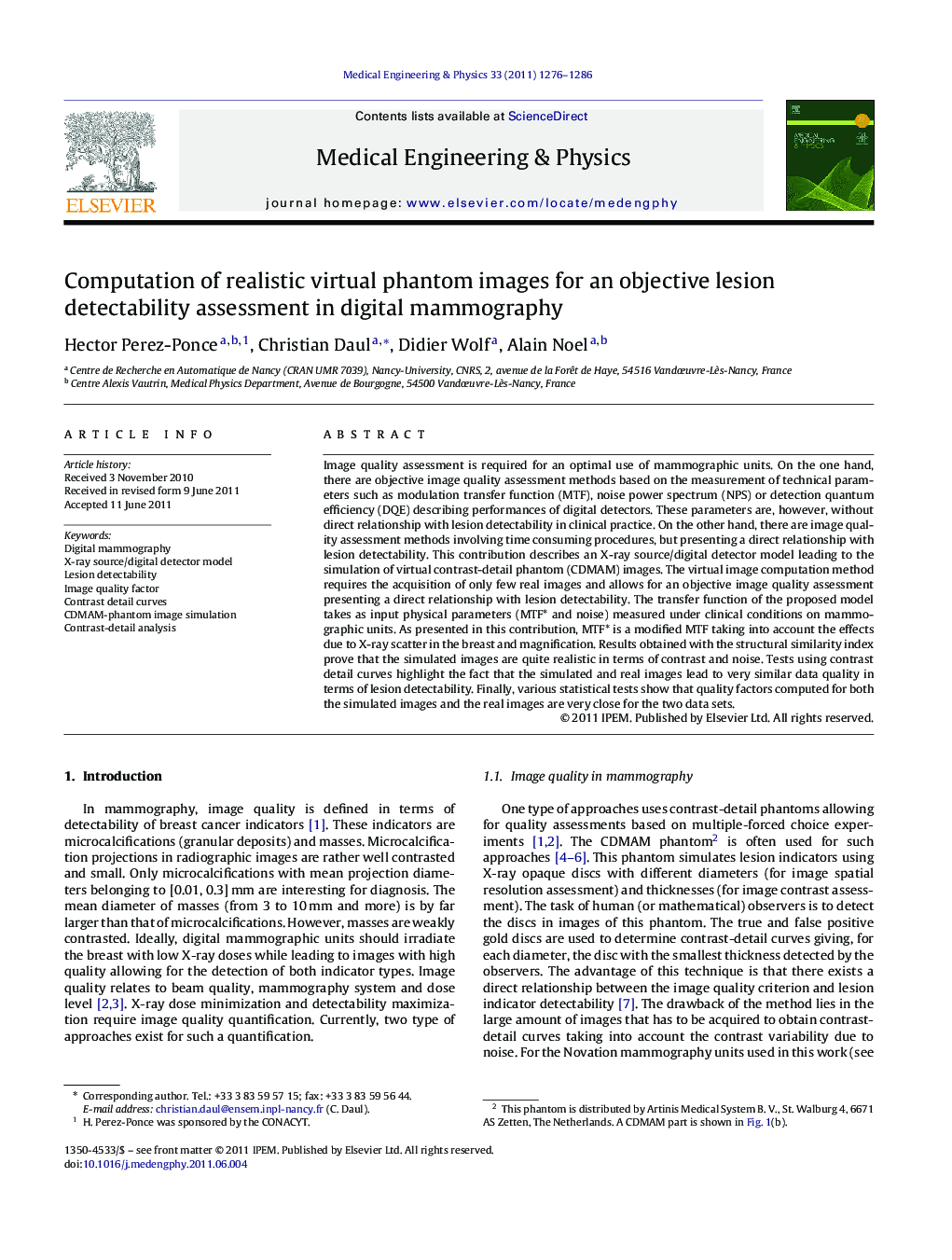| Article ID | Journal | Published Year | Pages | File Type |
|---|---|---|---|---|
| 876643 | Medical Engineering & Physics | 2011 | 11 Pages |
Image quality assessment is required for an optimal use of mammographic units. On the one hand, there are objective image quality assessment methods based on the measurement of technical parameters such as modulation transfer function (MTF), noise power spectrum (NPS) or detection quantum efficiency (DQE) describing performances of digital detectors. These parameters are, however, without direct relationship with lesion detectability in clinical practice. On the other hand, there are image quality assessment methods involving time consuming procedures, but presenting a direct relationship with lesion detectability. This contribution describes an X-ray source/digital detector model leading to the simulation of virtual contrast-detail phantom (CDMAM) images. The virtual image computation method requires the acquisition of only few real images and allows for an objective image quality assessment presenting a direct relationship with lesion detectability. The transfer function of the proposed model takes as input physical parameters (MTF* and noise) measured under clinical conditions on mammographic units. As presented in this contribution, MTF* is a modified MTF taking into account the effects due to X-ray scatter in the breast and magnification. Results obtained with the structural similarity index prove that the simulated images are quite realistic in terms of contrast and noise. Tests using contrast detail curves highlight the fact that the simulated and real images lead to very similar data quality in terms of lesion detectability. Finally, various statistical tests show that quality factors computed for both the simulated images and the real images are very close for the two data sets.
